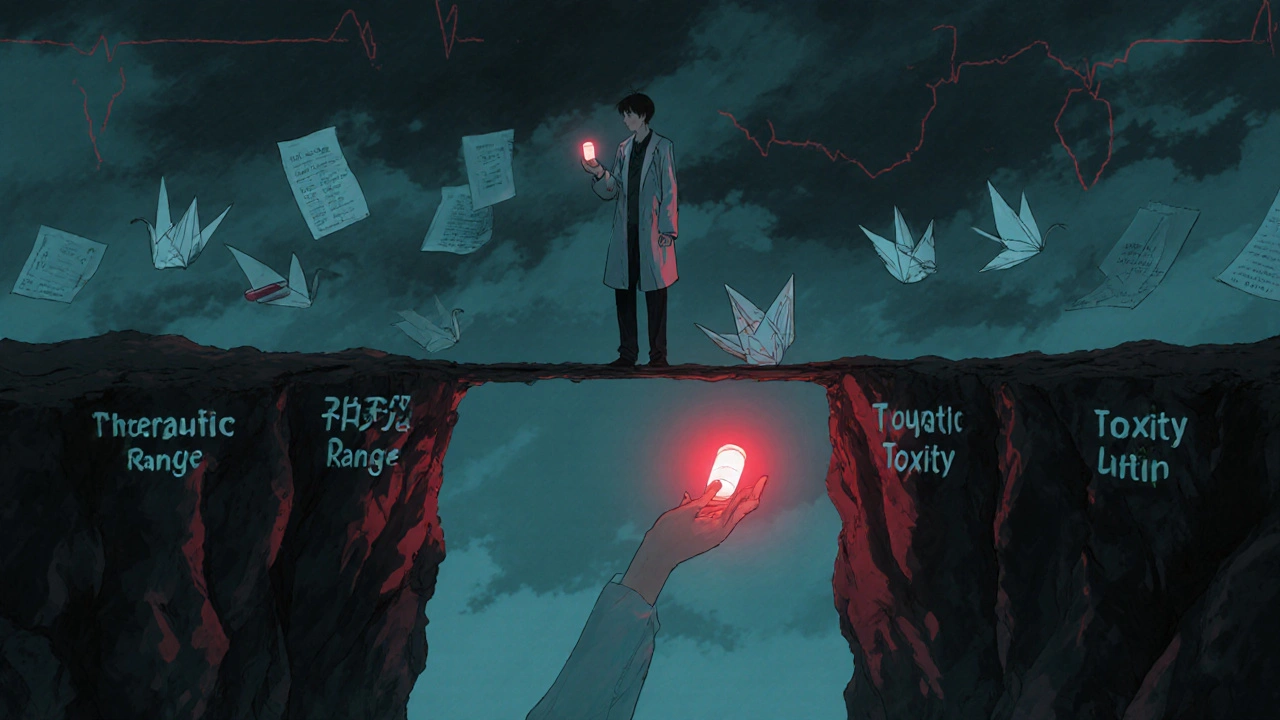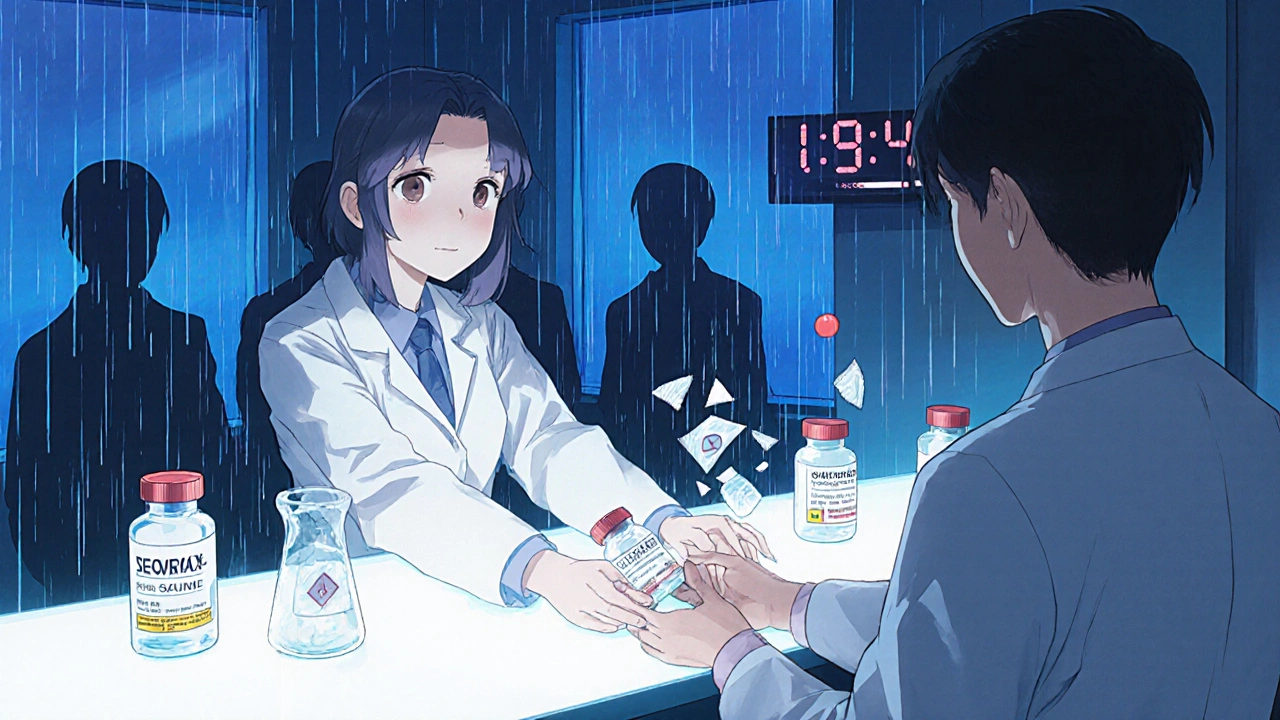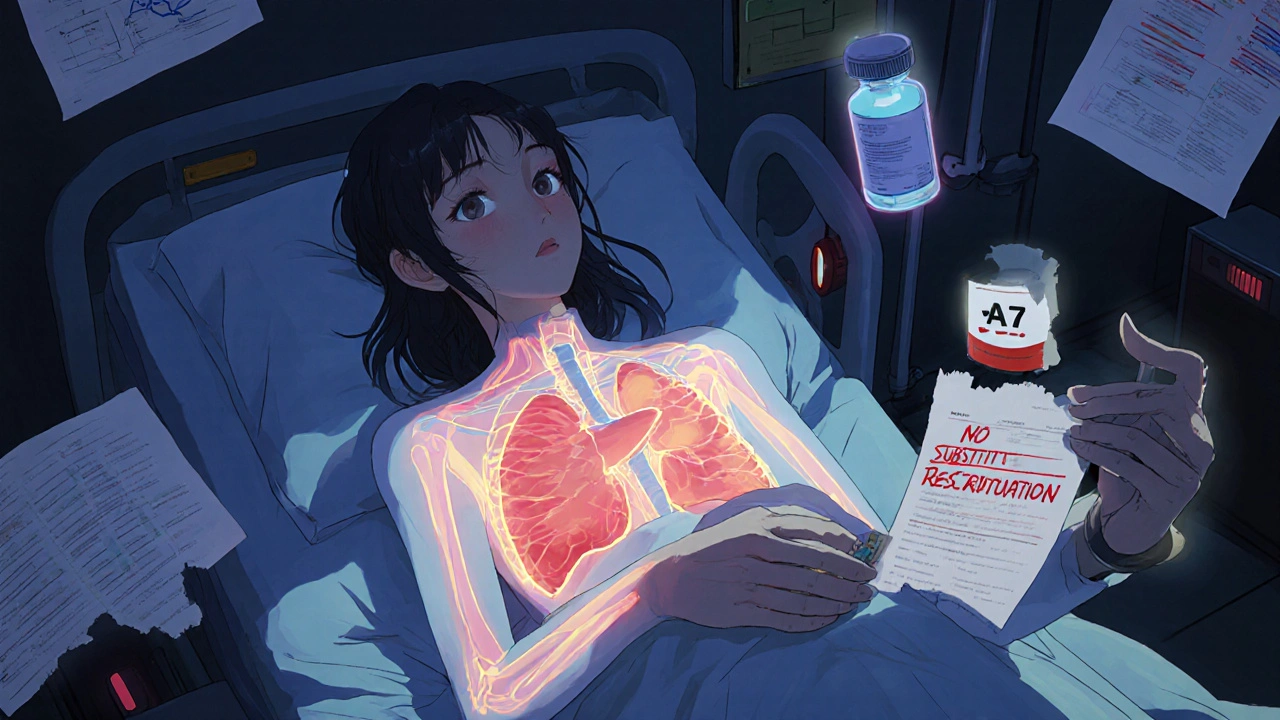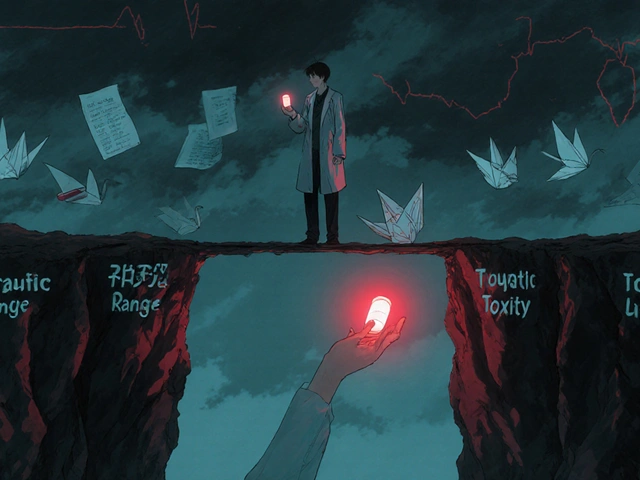NTI Drug List: Common Medications with Narrow Therapeutic Windows

Some medications are like walking a tightrope. Take just a little too much, and you risk serious harm. Take a little too little, and the treatment doesn’t work. These are NTI drugs - Narrow Therapeutic Index medications. There’s no room for error. A 10% change in dose can send you from safe to dangerous. That’s why doctors and pharmacists treat them differently than other pills.
What Makes a Drug an NTI Drug?
NTI stands for Narrow Therapeutic Index. It means the difference between a helpful dose and a harmful one is tiny. The FDA defines it clearly: small changes in blood levels can cause treatment failure or life-threatening side effects. For most drugs, your body can handle some variation. Not with NTI drugs. Their effective range is often just a few nanograms per milliliter. Digoxin, for example, works between 0.5 and 2.0 ng/mL. Go above 2.0, and you risk fatal heart rhythms. Drop below 0.5, and your heart failure gets worse.
This isn’t theoretical. Studies show NTI drugs account for 30% of dosing-related adverse events, even though they make up only about 15% of drugs requiring blood monitoring. That’s why hospitals track levels closely. And why switching brands - even to a generic - can cause problems.
Common NTI Drugs You Need to Know
There’s no single official list, but certain drugs appear again and again across FDA guidance, state pharmacy boards, and clinical guidelines. Here are the most common ones:
- Warfarin - An anticoagulant. Your blood’s clotting time is measured with an INR test. The target range is 2.0-3.0 for most people. An INR over 4.0 increases major bleeding risk by more than seven times. Even a small change in diet, antibiotics, or dose can throw it off.
- Lithium - Used for bipolar disorder. Safe levels are 0.6-1.2 mmol/L. Above 1.5, you risk tremors, confusion, kidney damage. Below 0.6, mood swings return. Many patients miss their blood tests - 32% skip appointments - and that’s when things go wrong.
- Digoxin - For heart failure and atrial fibrillation. Therapeutic range: 0.5-2.0 ng/mL. Too high? Nausea, blurred vision, irregular heartbeat. Too low? No benefit. It’s old, but still widely used, and easy to overdose if kidney function drops.
- Phenytoin - An antiseizure drug. Works best between 10-20 mcg/mL. Levels outside that range mean either more seizures or dizziness, slurred speech, even coma. Many patients don’t realize their generic brand changed - and their seizure control slips.
- Tacrolimus - An immunosuppressant after organ transplants. Trough levels must stay between 5-15 ng/mL. A level of 20 ng/mL can cause kidney damage. A level of 3 ng/mL can trigger rejection. Transplant centers check levels three times a week at first.
- Carbamazepine - Another seizure and nerve pain drug. Target range: 4-12 mcg/mL. It interacts with dozens of other medications, and its metabolism changes with time. Even a small dose adjustment can cause toxicity.
- Levothyroxine - For hypothyroidism. Doesn’t sound dangerous, right? But a 12.5 mcg change - less than half a pill - can shift TSH from 1.2 to 8.7 mIU/L, as one patient discovered after switching generics. That’s a 7-fold increase in thyroid hormone deficiency.
- Cyclosporine - Another transplant drug. Therapeutic range: 100-400 ng/mL. Even slight drops can lead to organ rejection. Many patients are told their generic version is “equivalent,” but studies show minor differences can trigger immune responses.
Newer cancer drugs are joining this list too. Axitinib, ponatinib, olaparib - all targeted therapies with narrow windows. Their doses are fine-tuned based on blood levels, weight, and genetics. One wrong dose can mean tumor growth or severe liver damage.

Why Generic Substitutions Can Be Risky
Most people assume generics are interchangeable. That’s true for most drugs. Not for NTI drugs.
The FDA requires stricter bioequivalence standards for NTI generics. While regular generics must be 80-125% as effective as the brand, NTI generics must stay within 90-111%. That’s tighter. But even then, small differences in absorption or fillers can matter. One patient on Reddit shared how switching from Synthroid to a generic levothyroxine caused her TSH to spike from 1.2 to 8.7. It took three months to stabilize. She lost weight, felt exhausted, and her depression returned.
That’s why 47 U.S. states have laws restricting automatic substitution of NTI drugs. In 28 states, the doctor must specifically write “Dispense as written” or “No substitution.” New Zealand’s MEDSAFE says NTI drugs like warfarin and cyclosporine “should not be considered interchangeable without physician authorization.”
Monitoring and Management
If you’re on an NTI drug, you’re not just taking a pill. You’re in a monitoring program.
- Warfarin: INR tested weekly at first, then every 2-4 weeks once stable.
- Lithium: Blood tests every 3-6 months, more often if you’re sick or on new meds.
- Tacrolimus: Three times a week after transplant, then weekly, then monthly.
- Phenytoin: Trough levels checked every 1-3 months, or after any dose change.
These tests cost $25-$150 each. Medicare covers 80%, but co-pays add up. Many patients skip tests because of cost, fear, or forgetfulness. That’s when hospitalizations happen.
Hospitals are starting to use AI to predict dangerous levels before they occur. One pilot study across 12 hospitals cut NTI-related errors by 28% using smart alerts in electronic records. But only 45% of hospital systems have these alerts. Most still rely on staff remembering to check.

What You Can Do
If you’re on one of these drugs:
- Know your target range. Ask your doctor: “What should my blood level be?”
- Don’t switch brands without talking to your prescriber. Even if the pharmacy says it’s the same.
- Keep a log of your doses and test results. Bring it to every appointment.
- Tell every new doctor you’re on an NTI drug. Many don’t know the list.
- Watch for symptoms: dizziness, nausea, irregular heartbeat, confusion, tremors. These aren’t normal side effects - they’re warning signs.
- Ask about pharmacogenomic testing. For warfarin and phenytoin, genetic tests can predict your ideal dose before you even start. It’s not standard yet, but it’s becoming more common.
NTI drugs aren’t dangerous because they’re bad. They’re dangerous because they’re powerful. Used right, they save lives - transplant patients, people with epilepsy, those with heart failure. But they demand respect. Precision. Attention.
There’s no magic bullet. No app that replaces your doctor. But if you stay informed, stay consistent, and stay in touch with your care team, you can manage them safely. Because when the margin is this thin, your actions matter more than you think.
Are all generic drugs unsafe for NTI medications?
No, not all generics are unsafe. The FDA requires stricter bioequivalence standards for NTI drugs - 90-111% compared to 80-125% for regular drugs. Many generic versions are safe and effective. But because even small differences can matter, automatic substitution is often restricted by law. Always consult your doctor or pharmacist before switching brands.
Can I stop taking my NTI drug if I feel fine?
Never stop or change your dose without medical advice. Even if you feel fine, your blood levels might be dropping below the therapeutic range. For example, stopping levothyroxine can cause your TSH to rise sharply, leading to fatigue, weight gain, and heart problems. Stopping lithium can trigger a severe mood episode. These drugs require steady levels to work safely.
Why do I need blood tests if I’m taking the same dose?
Your body changes. Kidney function, liver metabolism, weight, diet, and other medications can all affect how your body processes an NTI drug. A dose that was perfect six months ago might now be too high or too low. Blood tests are the only way to know for sure. That’s why regular monitoring isn’t optional - it’s essential.
Is there a list of NTI drugs I can check?
There’s no single global list, but authoritative sources include the FDA’s Orange Book, state pharmacy boards (like North Carolina and Oklahoma), and clinical guidelines from the American College of Clinical Pharmacy. Your pharmacist can also tell you if your medication is considered NTI. Don’t rely on online lists alone - they may be outdated.
Do NTI drugs interact with other medications?
Yes, very often. Warfarin interacts with antibiotics, painkillers, and even grapefruit juice. Lithium levels rise with NSAIDs and diuretics. Phenytoin is affected by many antifungals and seizure meds. Always tell every prescriber - including dentists - that you’re on an NTI drug. A new prescription could push your levels into the danger zone.
What’s Next for NTI Drugs?
The future of NTI drugs is getting smarter. The NIH is funding research into using genetics to predict the right starting dose for warfarin and phenytoin - early results show a 40% faster path to stable levels. Wearable sensors that track drug levels in real time are in development. AI tools are learning to predict when a patient’s level will drop - before they even feel symptoms.
But technology won’t fix everything. The biggest challenge remains access. Blood tests cost money. Not everyone can afford them. Not everyone has a doctor who checks levels regularly. That’s why awareness matters. If you’re on one of these drugs, you’re not just a patient - you’re a key part of your own safety net.


